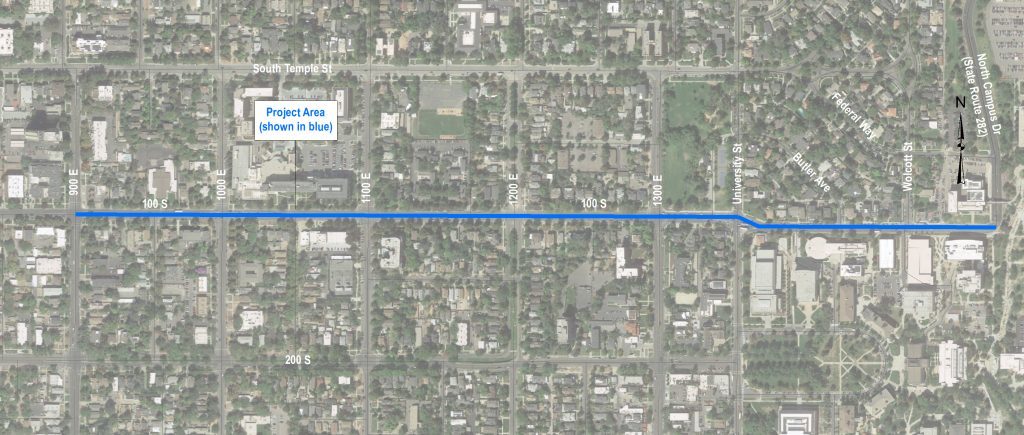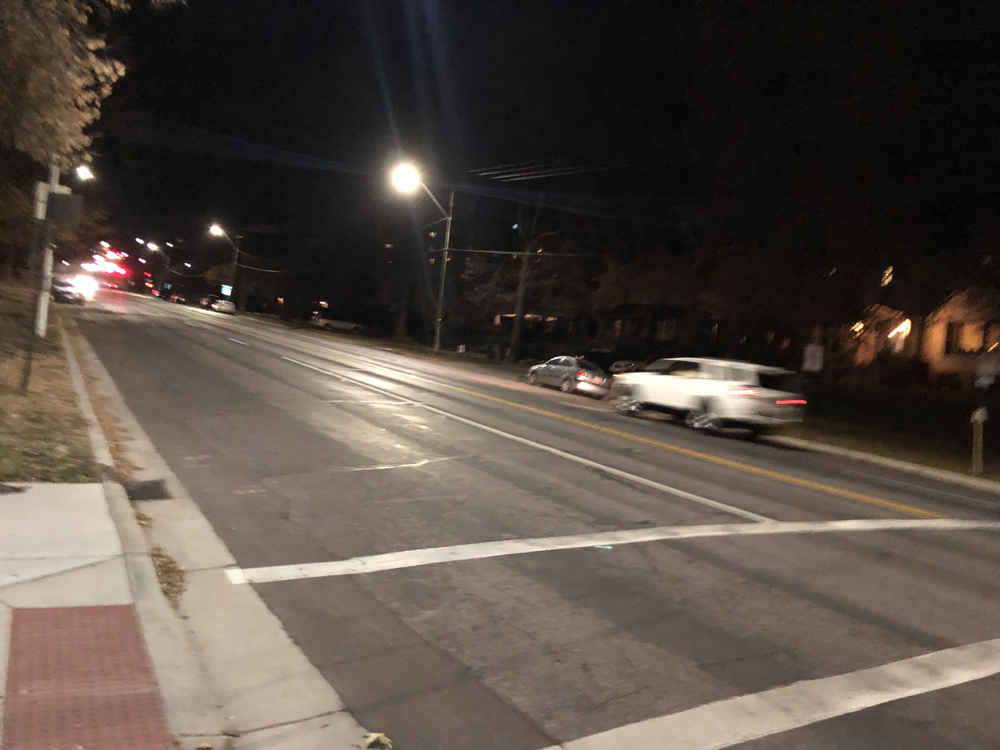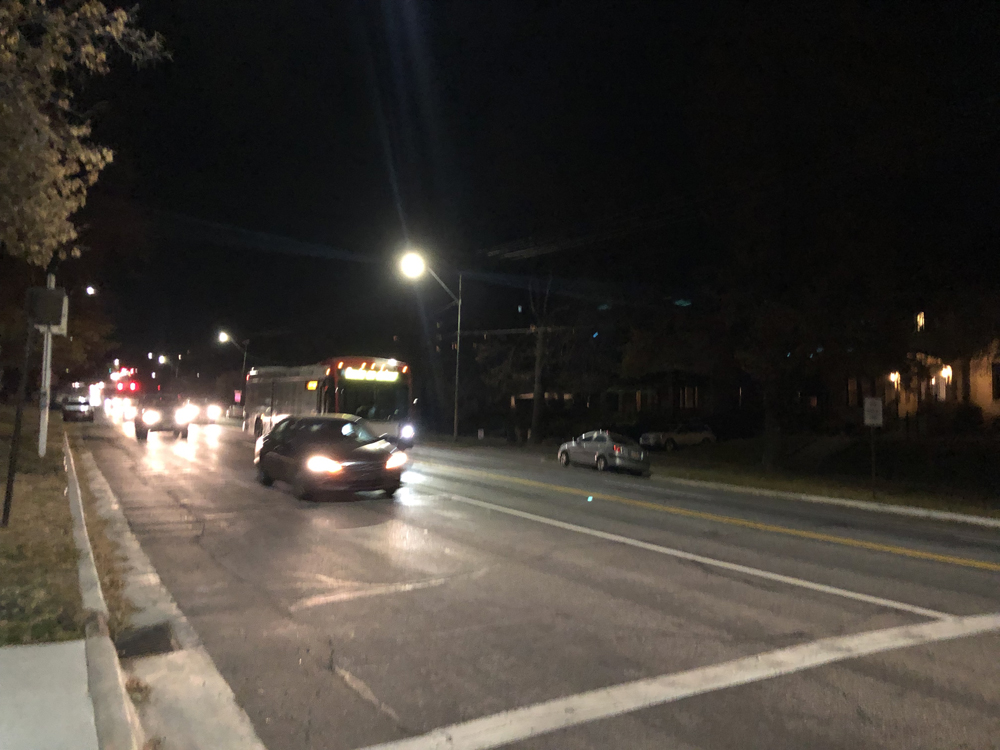Salt Lake City is Starting the Process to Reconstruct 100 S – No Bike Lanes Are Planned
Editorial and Analysis:
Salt Lake City is preparing to reconstruct 100 S between 900 E and N. Campus Drive on the University of Utah Campus. The roadway is a major corridor for those driving to the University of Utah, especially the health complexes. Will the street be reconstructed according to the Complete Streets Ordinance of 2010? At the Salt Lake City Bicycle Advisory Committee meeting on November 18, 2019, city transportation planning staff stated that bike lanes are not planned for the project except for possibly between 1300 E and N. Campus Drive. This is a clear intended violation of the Complete Streets Ordinance as we will discuss below.

Advocacy Alert – Take the Survey by December 6, 2019 and Submit Comments on 100 S.
The project webpage mentions nothing about bike lanes:
Salt Lake City is seeking community input for the rebuild of this street. Proposed changes are to be determined, and may include some changes to intersections, sidewalks, curbs, pedestrian crossings, bus stops, road striping, driveways ramps, and/or parking. Community input will be shared with the design team as we develop the draft concept in the next few months.
The survey does ask if one feels unsafe riding on 100 S. But nothing is mentioned about adding bike lanes.
The conclusion is that Salt Lake City does not intend to install bike lanes on 100 S.
Send an email to [email protected] or use our editable petition form:
[emailpetition id=”4″]
100 S in this area is currently is a 4 lane road, mostly with no center turn lane. The roadway is in a state of disrepair, and hence is near the top of the list for reconstruction.
While we are all for maintaining and reconstructing streets in Salt Lake City, we believe that all streets should be safe and accommodating for all users. Currently, 100 S is not. It is accommodating to cars. It isn’t even great for the plentiful UTA buses that traverse the street.
The street like many in Salt Lake City has a 30 mph speed limit. Yet observationally, cars exceed this almost always. So what does this say about the street? 2 things. One, the speed limit is too high, and should be reduced to 25 mph since studies show that people actually do adjust their speeds based on the posted limit. “Lowering the speed limit by 5 mph on city streets can improve safety for motorists, pedestrians and bicyclists alike by reducing speeding, new research by the Insurance Institute for Highway Safety indicates,” states a press release on the IIHS website. Second, if roadway speeds are too high, the preferred method for reducing speeds is through better road design – a road diet with bike lanes is one great way to do this. 100 S is a perfect candidate for this change.


Salt Lake City has a Complete Streets Ordinance, not a sometimes we want to pay attention to it and sometimes not loose guideline for accommodating users other than cars. The 2010 Ordinance states, “All city owned transportation facilities in the public right of way on which bicyclists and pedestrians are permitted by law, including, but not limited to, streets, bridges, and all other connecting pathways, shall be designed, constructed, operated, and maintained so that users, including people with disabilities, can travel safely and independently. (Ord. 4-10 § 1, 2010).” The operative word is SHALL.
And, “A. Bicycle and pedestrian ways shall be established in the city’s new construction and reconstruction projects in the public right of way, subject to budget limitations, unless one or more of the following three (3) exemption conditions is met…” (For the exemptions, see the ordinance. None of them apply in this situation.
This requires that 100 S have bike lanes installed during the reconstruction process.
Cycling Utah’s Recommendations for 100 S:
Our recommendation is that a Road Diet be applied to 100 S. For most of the stretch being reconstructed, there are 4 lanes and no center turn lane and for all of it, there are no bike lanes. Shifting the street to 2 travel lanes, 2 bike lanes (preferably protected bike lanes), and a center turn lane would be optimal. Given the width of the street, better pedestrian crossings could be installed, as could better boarding zones for people riding the bus. Lower the speed limit to 25 mph, and narrow the travel lanes too to 10 feet. Add some pedestrian bulbouts at 1000 E, 1100 E, and 1200 E (that don’t interfere with the bike lanes). Add some pedestrian islands, and some center of the road landscaping.
Why do this? The University of Utah is the largest single commuter destination in the state. To continue on the same path by encouraging everyone to drive to the U is not sustainable. The only way out is to improve walking, biking, and transit to the U, in that order.
Edited: It has been brought to our attention that this is one of the main emergency routes to the University of Utah hospital. If a road diet is not possible, there is likely room to keep two lanes in each direction, and add bike lanes too as the road is very wide.
Additionally, Salt Lake City should go back and fix its past violation of the Complete Streets Ordinance, and add bike lanes on 100 S between State Street and 600 E, which is about the area that was repaved during the Becker administration.
All this will lead to a Better 100 S.

